I have used Amazon affiliate links on this page. As an Amazon Associate, I earn a commission from qualifying purchases at no added cost to you. Thank you!
Hyphessobrycon sweglesi, sometimes known as the Red Phantom Tetra, is a stunningly colorful fish that both novice and experienced aquarists should consider keeping. These beautiful tetra fish must be kept in group aquariums since they are shoaling fish.
The Red Phantom Tetra could be the best addition to your aquarium if you’re seeking for a colorful fish that requires little maintenance. They really go well with planted tanks. Nevertheless, despite being a tough species, they do have some fundamental needs just like other tetra species.
Table of Contents
Natural Habitat of Red Phantom Tetra
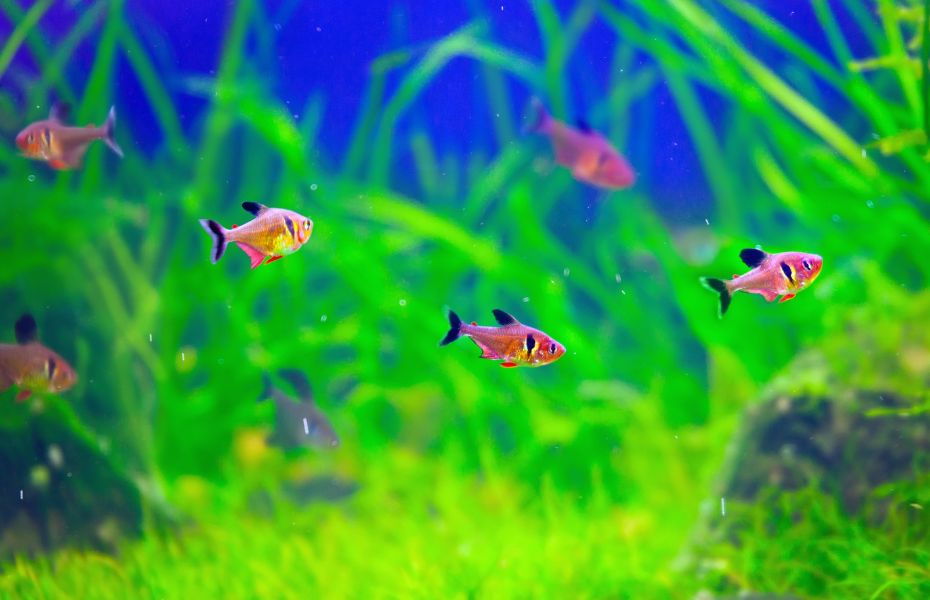
The South American region where Hyphessobrycon sweglesi originated is abundant in still ponds where the water is locked up. Also, there are a lot of tributaries of the Amazon River with relatively slow water flow where these fish thrive. They have also been reported in the Orinoco tributary.
Pahntom tetra species, including red phantoms, love planted habitats, hence the Amazon River is ideal for their natural habitat. The river is known for its diversity of fauna and diverse tetra species evolved for millions of years.
Appearance
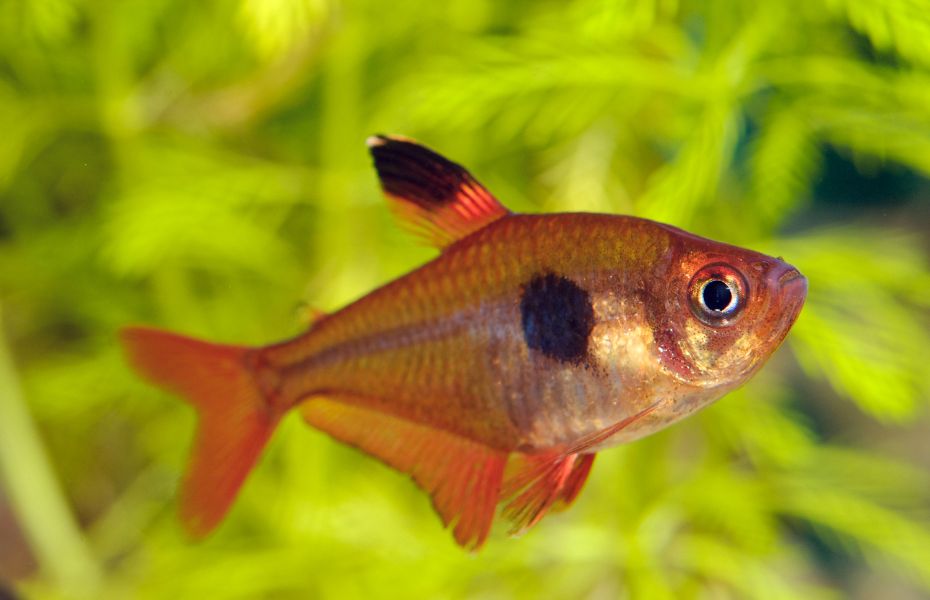
These vibrant colored beautiful tetras have orange-colored fins with red tips. They feature a black mark on either side of their gill plates, and their bodies are a transparent copper tint.
Red phantom tetras under stress may lose their color, and young fish under stress frequently cease developing. They can change color from red to black or a drab gray if the pH of the water is off.
Red Phantom Tetras have compact, stocky bodies that develop to a maximum size of 1.5 inches long.
Maximum Size and Lifespan of Red Phantom Tetra
Red phantom tetra adults can reach lengths of 1.5 inches. Male red phantom tetras are likewise brighter and more colorful than females, who have a duller coloring. Females are also broader than males. These fish will grow to their estimated average size in the wild, but not in captivity. The once you have in your aquarium might be much smaller due to the limited spaces they have to roam and to be active.
Provided the best water parameters and stress free habitat phantom tetras will live up to five years.
Do you have Angelfish? Do you want to know how to improve their lifespan? Please read here.
Behavior and Temperament
Red phantom tetras swim in the middle and upper levels of the aquarium when they feel safe. But when attacked or threatened, they hide behind vegetation, rocks, and caves.
These are schooling fish. When they live in shoals, they become much more peaceful and can be kept in community tanks with other tetras without much of an issue. However, when they are kept in smaller numbers, let’s say around 2 to 5 groups, they may become a bit more aggressive. This can grow and they can be pretty bad nibblers in the tank, always chasing after other fish, especially with the ones with long tails like goldfish or other tetras. Therefore, keeping them in large groups and in a tank full of space for the fish to roam and hide when needed is advised.
Red phantom tetra males frequently inflate themselves, pushing their ventral fins out to make themselves appear powerful to other males. Additionally, this aids males in luring females throughout the breeding season. Because of this, males may develop a stronger sense of territoriality than females.
These tetras looks similar to Serpae tetras. And the the Serpae tetra can be a lot more aggressive than the phantoms. They also tend to develop same behavior when kept in smaller groups.
Tank Mates of Red Phantom Tetra
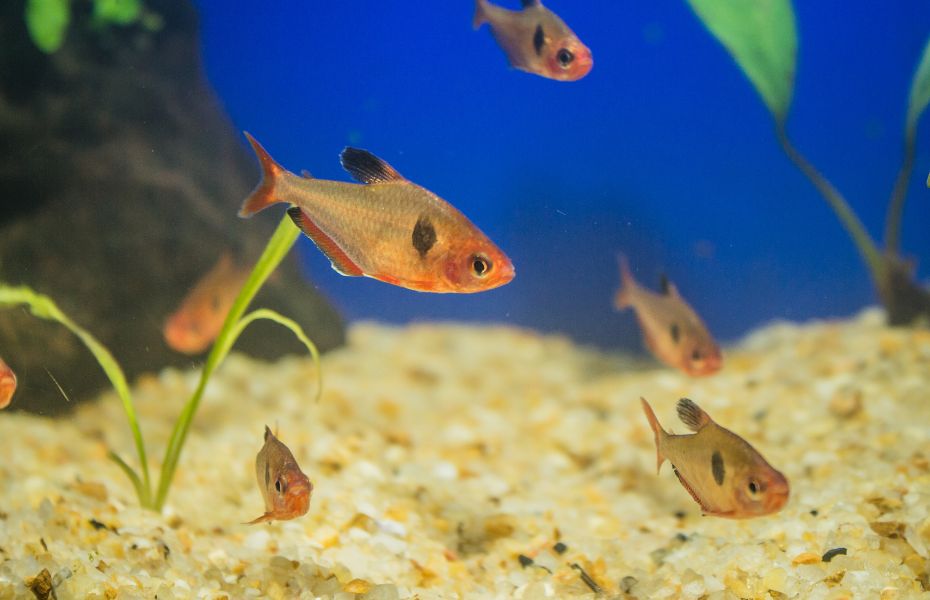
Red phantom tetras can be housed with other tetra fish subspecies that come in a variety of sizes and forms. Some are rhomboid in form, while others are neon and come in hues ranging from bronze to black. Both the black and red phantom tetras are resilient kinds of tetras and make excellent schooling partners. Serpae tetras are a wonderful addition to community tanks for phantom tetra. They can also be kept with less aggressive species like Danios, Corydoras, Platys, harlequin rasboras and mollies.
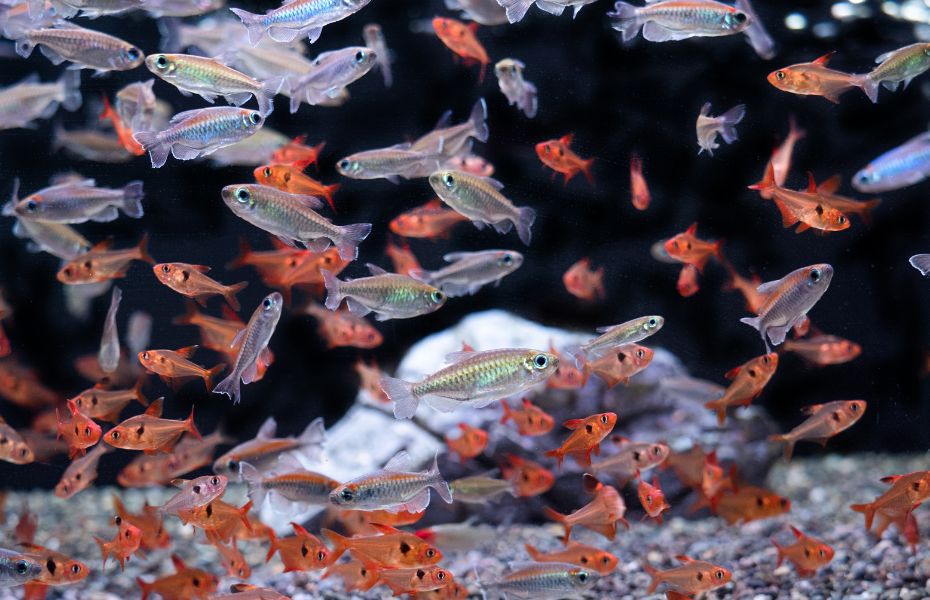
Being a shoaling species like most of other tetra species, red phantom tetra form sizable groups and swim together. They should often be kept in schools of 10-ish fish, but they can be in as few as 6. They will learn bullying and fin-nipping habits if they are left alone, as was previously indicated in this piece. If housed in groups, these fish will exhibit richer coloring and more interesting habits if there are an equal number of males and females.
Red Phantom Tetra should not be kept with aggressive or larger fish species. Because of their small size, larger species will see them as food. It is also recommended that they are not kept with slow-moving or long-finned fish such as Bettas and Angelfish because of their bit nipping behavior in smaller groups.
Tank Size
Red Phantom Tetra should, in general, have a tank with 3 gallons allotted for each adult fish. A 30-gallon tank would therefore be the perfect size for a school of 10 Red Phantom Tetra. Consequently, a pack of 20 fish can thrive in a 60 more gallons. It is crucial to take into account the fact that they are strong swimmers who enjoy having lots of space to free swim and hide. These fish are known for their energetic swimming styles, but they normally prefer slower moving water settings.
Red Phantom Tetra Care
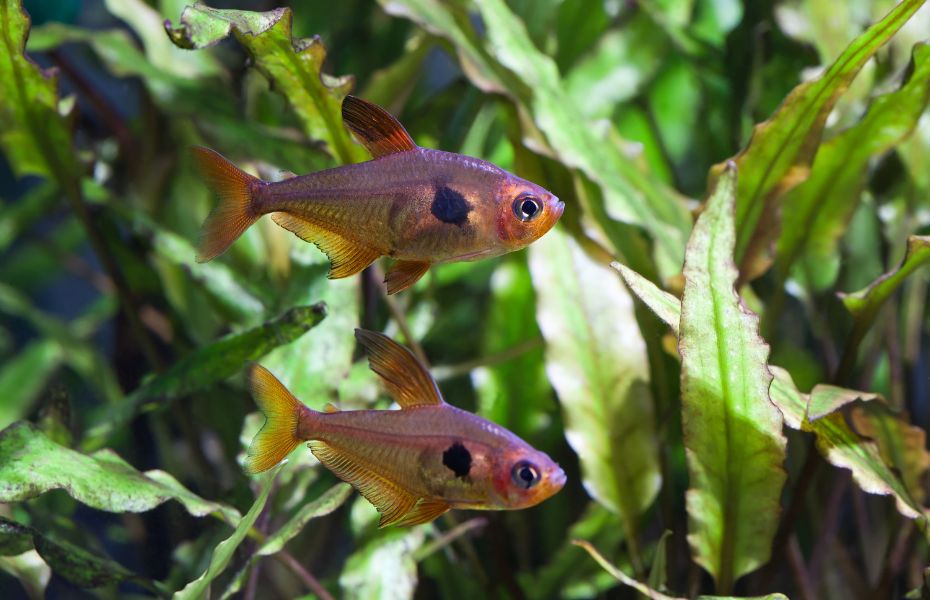
In the wild Amazon, the Red Phantom Tetra is frequently found in blackwater habitats. As a result, they favor tanks with low sunlight and shading from floating plants or little bags of aquarium peat. For their aquarium, a fine-grained, black substrate is ideal. They adore lush aquariums, but because they are strong swimmers, they require large spaces where they may freely swim. You can also include dried oak or beech leaves, which can add more cover. Make sure the top of their tank fits snugly. When stressed or feeling threatened, these fish are known to leap out of their tanks.
A light timer can be useful to create a day to night schedule for aquatic fish because they need to sleep or rest at night. In order to allow red phantom tetras to sleep at night or when their tank is dark, the tank light needs to be on for 12–14 hours every day.
The ideal water temperature ranges from 66°F to 78°F. Despite being a robust species, this fish is sensitive to water pollution, thus the water in their aquarium needs to be kept at a high standard. The fish thrive at pH ranges between 5.5 and 7.5 and in soft to medium-hardness water, often between 4 and 20 dH.
Diet of Red Phantom Tetra
The Red Phantom Tetra is an omnivore that thrives on a balanced diet of meat-based foods and plants. They are known for consuming almost anything that is presented to them. Plant matter, Blood worms, Daphnia, brine shrimp, and mosquito larvae are all included in their natural diet.
Tropical flakes and other fine-grained foods are favorites of this fish in captivity. Red phantom tetras prefer to feed and swim in the upper and middle levels of the aquarium. So sinking foods aren’t the best choice.
Breeding
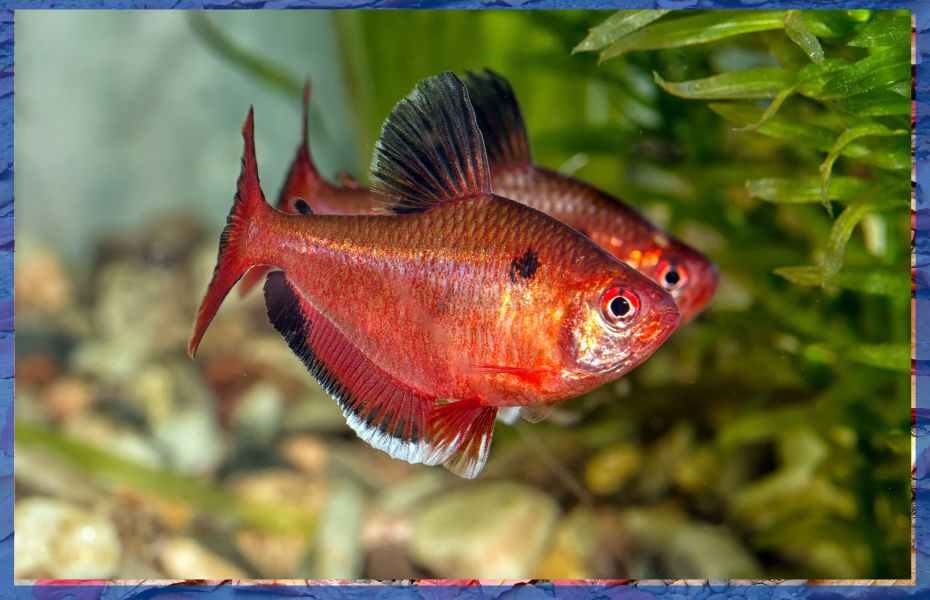
Males can be distinguished from females by having a dorsal fin that is longer than that of a female, which a female lacks.
As an egg-spreading species, Red Phantom Tetras are relatively simple to breed in captivity. Hence, It is necessary to have a separate 15–20 gallon tank with softer and more acidic water characteristics or else other fish including tetras can immediately eat the eggs. Water in the breeding tank must be between 75°F and 80°F in temperature, have a pH of 5.5 to 6.5, and a hardness of 1 to 5 dH. For the females to have a place to lay their eggs, this tank must have low illumination and fine-leaf vegetation. The base might also be covered in mesh to allow the eggs to fall through as the red phantom tetra do not display any parental care and can eat their own eggs.
Within 24 to 36 hours, the eggs will hatch, and in 3 to 4 days, they will transform into free-swimming fry.
At first free swimming fry will eat their yolk sac, but after that you need to feed them with infusoria, Egg yolk and brine shrimp. Be aware of water quality when adding these foods, specially egg yolk, feed only the amount they need.
Diseases & Avoiding Them

Common aquarium diseases can infect red phantom tetras when there is poor water conditions. It’s best to get your tank established before adding red phantom tetras to the aquarium. This helps the aquarium to well-cycled and the water parameters can be maintained in ideal states. Also infections caused by bacteria or fungi can be introduced when you add new fish, plants and driftwoods. All these needs to go under quarantine period before introducing them to your main tank with red phantoms tetras in it.
bacterial illnesses, including tail-and-fin rot, columnaris, and red pest are common when the fish is kept in bad water conditions and crowded environments . Antibiotics must be used to treat bacterial infections by placing the sick fish in a quarantine tank. If the whole tank is infected it’s ideal to treat them in the main aquarium.
They are aslo susceptible to parasitic infections, most famous one is known as “Ich” or white spots. To reduce the parasite load and give the fish a chance at recovery, add antibiotics and copper-based therapies to the tank water.
In the wake of these medications, you can use active carbon to your filter to remove medications from your main tank.
Conclusions
Red phantom tetra is suggested for aquarists of all levels given that they can adapt to a wide range of water parameters. They can coexist with a variety of species that have temperaments that are comparable. The key is to simulate the habitat they used to live in the wild. This involves giving them the enough space to swim freely. Most importantly it’s important to know that they need our care although they are hardy when compared to other small fish.
You Can Join our reddit community Here.
Pingback: Gold Nugget Pleco - A Comprehensive Care Guide - Pet Fish 101